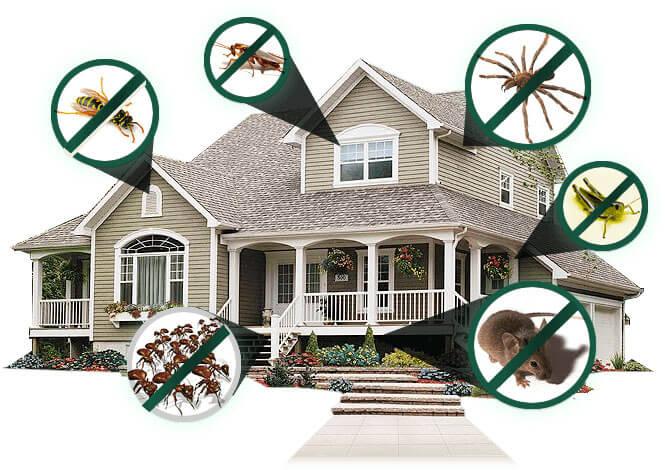Quality A1 Pest Control Services Charlotte - Shield Your Home
Quality A1 Pest Control Services Charlotte - Shield Your Home
Blog Article
Bed Insect Therapy Malfunction: Comparing Chemical Vs. Non-Chemical Solutions
In the realm of pest control, particularly when handling the relentless problem of bed bugs, the selection between chemical and non-chemical treatment options can be a pivotal one. Both strategies supply unique benefits and drawbacks, affecting variables such as efficiency, safety and security considerations, and overall cost. By analyzing the nuanced details of each approach, a clearer understanding of which path to go after in dealing with a bed pest invasion can be acquired.
Performance of Chemical Treatments
Chemical therapies for bed insect invasions have actually been widely acknowledged for their powerful and rapid effectiveness in removing these pests. When considering the efficiency of chemical treatments, it is important to comprehend that they can provide a extensive and quick solution to a bed pest issue.
Furthermore, chemical treatments have the advantage of supplying recurring impacts, indicating that they can continue to eliminate bed bugs also after the initial application. This recurring action is particularly beneficial in combating any kind of potential re-infestations. In addition, the quick action of chemical therapies can bring alleviation to individuals encountering serious bed pest invasions, allowing them to gain back control of their living areas promptly.
Security Worry About Chemical Solutions
One critical element that requires careful factor to consider when using chemical options for bed insect treatment is ensuring the safety and security of owners and the atmosphere. Exposure to certain chemicals used in bed insect therapies can lead to breathing concerns, skin irritability, or other adverse reactions, specifically in individuals with pre-existing problems or level of sensitivities.
In addition, the ecological impact of chemical remedies is another substantial consideration. Some chemicals utilized in bed insect treatments may be dangerous to beneficial bugs, wild animals, and environments if they seep right into the soil or water systems. It is important to use chemical treatments sensibly, complying with safety and security standards, and considering less poisonous options to alleviate these risks and ensure the risk-free and reliable administration of bed insect problems.
Benefits of Non-Chemical Approaches
Taking into consideration the prospective security problems and environmental effect connected with chemical remedies for bed insect therapy, discovering non-chemical approaches offers an appealing choice with a number of distinct benefits. Non-chemical methods supply a much safer choice for homes, specifically those with kids, family pets, or individuals conscious severe chemicals. These techniques get rid of the dangers of exposure to poisonous substances, minimizing the potential for unfavorable health impacts. In addition, non-chemical therapies are environmentally pleasant, as they do not add to air or water air pollution, making them a lasting option for parasite control.
Furthermore, non-chemical services can be effective in targeting bed insects, including hard-to-reach locations where chemical therapies might not permeate. Approaches such as heat treatment, vacuuming, vapor cleansing, and bed mattress coverings give thorough obliteration without using unsafe chemicals. Moreover, non-chemical methods can be much less turbulent, calling for marginal preparation and enabling quicker reentry into treated areas. Overall, deciding for non-chemical bed pest therapy methods not only focuses on safety and environmental management however also ensures reliable and thorough pest control.
Limitations of Non-Chemical Treatments

In addition, non-chemical therapies often require multiple applications to accomplish successful elimination. This can be taxing and might not always ensure total removal of all bed pests and their eggs, particularly in hard-to-reach or surprise locations.
Moreover, the success of non-chemical therapies greatly counts on proper execution and thoroughness, which can be testing for people without specialist experience. Insufficient application of non-chemical approaches might cause incomplete obliteration, leading to relentless invasions and the requirement for extra therapies.
Consequently, while non-chemical therapies have their benefits, it is important to recognize these constraints and consider them when determining one of the most reliable strategy for managing bed insect infestations.
Price Contrast: Chemical Vs. Non-Chemical Options
Provided the restrictions associated with non-chemical therapies, an important aspect to review in the context of bed insect administration is the price comparison in between chemical and non-chemical alternatives. In contrast, non-chemical treatments like warmth treatment or vapor can be much more expensive, with costs ranging from $1,000 to $6,000 for an entire home. While the preliminary price of chemical treatments may seem lower, numerous therapies might be required to A1 pest control services charlotte fully get rid of the invasion, potentially boosting the overall expense.
Verdict

Taking into consideration the potential security worries and environmental impact associated with chemical solutions for bed insect treatment, checking out non-chemical strategies presents an appealing choice with numerous distinctive advantages.Provided the limitations connected with non-chemical treatments, an important facet to examine in the context of bed pest monitoring is the price contrast between chemical and non-chemical options. In comparison, non-chemical therapies like warm therapy or steam can be much more expensive, with prices varying from $1,000 to $6,000 for a whole home. While the initial expense of chemical treatments may appear reduced, several treatments may be required to totally get rid of the invasion, potentially enhancing the overall price.In conclusion, when comparing chemical and non-chemical bed insect treatment choices, it is crucial to think about performance, safety and security, benefits, limitations, and expense.
Report this page